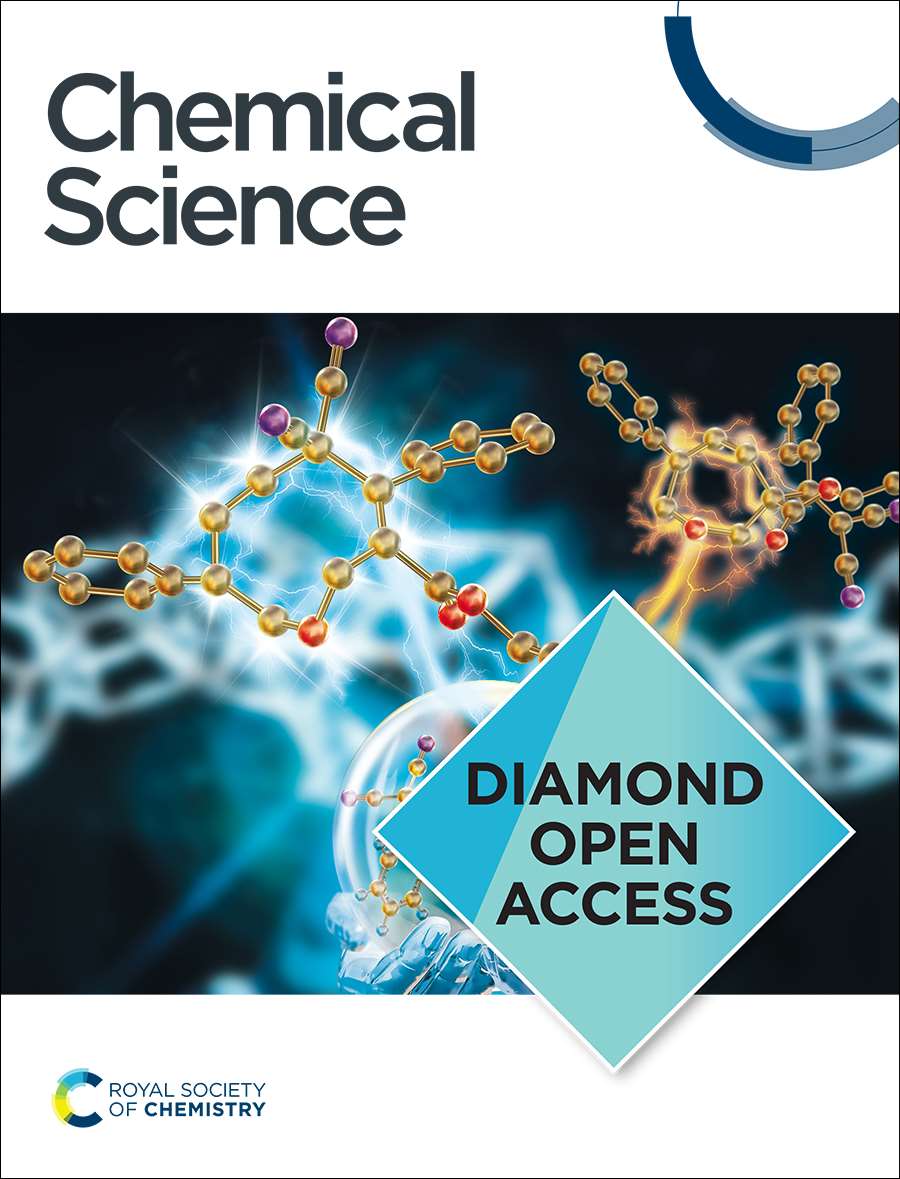Tuning the Surface Chemistry of NHC–Protected Au13 Nanoclusters Via a Robust Amide Coupling Procedure
IF 7.4
1区 化学
Q1 CHEMISTRY, MULTIDISCIPLINARY
引用次数: 0
Abstract
There is significant potential use for gold nanoclusters in biomedicine owing to their favorable biological and optical properties. To access this potential, there is a need for methods to alter the ligand scaffold of gold nanoclusters to tune their biological properties. Surface modifications to the ligands must occur with molecular precision to generate monodisperse products for the accurate determination of structure activity relationships and eventual translation to clinical practice. Herein, we describe methods for molecularly precise surface modifications to Au13 nanoclusters via amide couplings to -COOH functionalities and their stability to conditions necessary for the removal of protecting groups used in amide coupling chemistry. These clusters were found to be highly stable to basic conditions for the removal of base-labile -Fmoc and -OMe groups but less stable to acidic conditions for the removal of acid-labile -Boc and -OtBu groups. The ligand shell and Au13 core of such clusters were found to be preserved following modifications to the ligand shell allowing the solubility and biological properties of the cluster to be altered independently of their optical properties. The nature of the protecting ligand was found be instrumental for cluster stability to enable the use of the harsh conditions necessary to yield monodisperse products.通过稳健的酰胺偶联过程调整nhc保护的Au13纳米簇的表面化学
金纳米团簇具有良好的生物学和光学特性,在生物医学领域具有重要的应用前景。为了获得这种潜力,需要改变金纳米团簇的配体支架以调整其生物学特性的方法。配体的表面修饰必须以分子精度发生,以产生单分散的产物,以准确确定结构活性关系并最终转化为临床实践。在此,我们描述了通过酰胺偶联到-COOH官能团对Au13纳米团簇进行分子精确表面修饰的方法,以及它们在酰胺偶联化学中去除保护基团所需条件下的稳定性。研究发现,这些簇在碱性条件下对碱性不稳定的-Fmoc和-OMe基团具有很高的稳定性,但在酸性条件下对酸性不稳定的-Boc和-OtBu基团的去除不太稳定。研究发现,在对配体外壳进行修饰后,这种簇的配体外壳和Au13核被保留下来,从而使簇的溶解度和生物学性质独立于其光学性质而改变。发现保护配体的性质有助于簇稳定性,从而能够在产生单分散产物所需的苛刻条件下使用。
本文章由计算机程序翻译,如有差异,请以英文原文为准。
求助全文
约1分钟内获得全文
求助全文
来源期刊

Chemical Science
CHEMISTRY, MULTIDISCIPLINARY-
CiteScore
14.40
自引率
4.80%
发文量
1352
审稿时长
2.1 months
期刊介绍:
Chemical Science is a journal that encompasses various disciplines within the chemical sciences. Its scope includes publishing ground-breaking research with significant implications for its respective field, as well as appealing to a wider audience in related areas. To be considered for publication, articles must showcase innovative and original advances in their field of study and be presented in a manner that is understandable to scientists from diverse backgrounds. However, the journal generally does not publish highly specialized research.
 求助内容:
求助内容: 应助结果提醒方式:
应助结果提醒方式:


